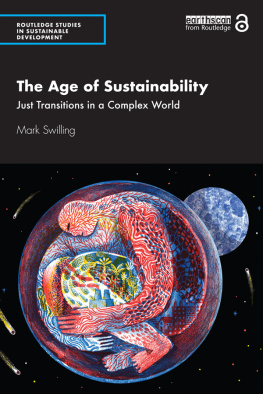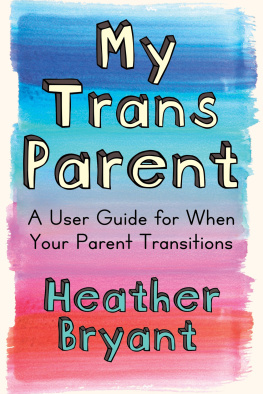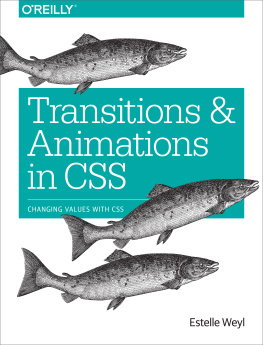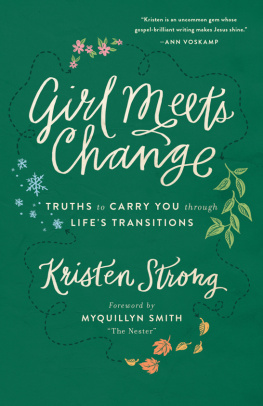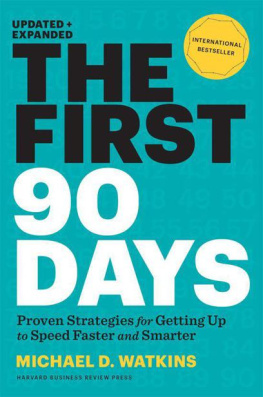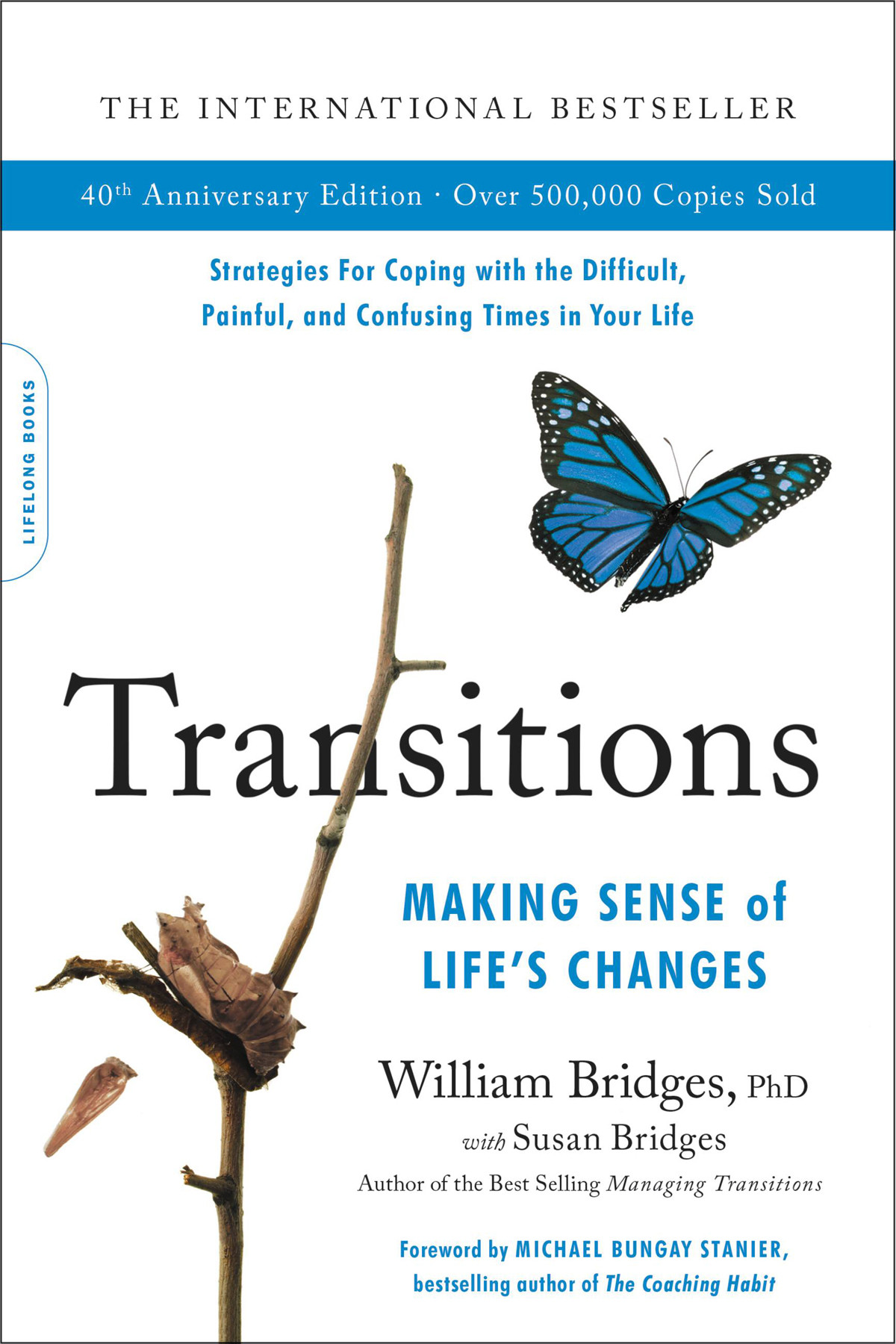H . L. Mencken hit the nail on the head: Every complex problem has a solution which is simple, direct, plausibleand wrong. Change is the epitome of the complex problem. The internet is the epitome of answers that are simple, direct, plausible, and wrong. If youre looking for the seven secrets to change that you can master by lunchtime, then this is not the book youre looking for.
Theres no silver bullet in this book, but there is some magic. The magic is in how William Bridges changes the conversation, from being about the tactics of change to being about the journey of transformation. I learned that this wasnt about me conquering a challenge and completing a task; it was about me understanding that transition is a constant and unsettling process that offers, as all great heros journeys do, the chance of growth and redemption.
Bridges introduces three phases of transition. Really, though, its more like a reintroduction. You know each of the phases; youve stumbled through them before. But its as though youve been given a pair of night goggles, so you can better see, understand, and navigate the path ahead.
Youre probably on a journey like that right now. My guess is that, at this very moment, as you read these words and breathe in and breathe out, youll be in one (at least!) of the three phases. You might be in the process of ending something, feeling the disorienting experience of something familiar changing, leaving, dying. You might have found yourself at a new beginning, an unknown and uncertain landscape opening up before you. Or perhaps youre in the neutral zone, not neutral in the sense of Switzerland, but neutral in the sense of ungeared, and you feel apathetic and pathetic, drifting and untethered.
Ive come to discover that the neutral zone is a particularly rich place in which to be. Bridges makes the point that we mostly want to hurry through it as fast as possible, to rush head-down through the ambiguity and get it over and done with. Thats exactly how Ive felt, and often still do. But Ive learned to linger. A mentor of mine shared a metaphor that I realize now is about navigating the neutral zone. When youre swimming underwater, she said, the longer you can hold your breath, the more interesting a place youll eventually pop up.
If I could offer up a suggestion here, Ive found that when youre in the neutral zone, one of the most powerful questions to sit with is, What do I want? Its a deceptively slippery question. Go beyond your first answer. Ask yourself again, What do I want? And what else? So what do I really want? When you find an answer that rings deep and clear, you may see possibilities open up, a new beginning appear, a new adventure begin to unfold.
Youll be back, of course. Part of whats makes Transitions so timeless is that the journey it describes is one that we will take time and time again. Were lucky to have William Bridges as a mentor and guide.
My husband and business partner, Bill Bridges, passed away in 2013, leaving a rich body of insightful work that resonates with people of all ages and backgrounds. Although his presence is missed, his wisdom and guidance continue to be timely and relevant as we navigate the inevitable transitions in our lives. Below is Bills preface, from the second edition published in 2004. I also share my thoughts in a few places later in the book.
Susan Bridges
I n the decades since this book was first published, my own life has gone through many transitions (sorry, but theres no better word for it) that I could not have foreseen when I originally wrote the book. In 1979, I was still an ex-literature teacher, but after Transitions I started a new career as a person who helped others deal with the changes in their lives. This little book got me launched.
At the time the book originally came out, I hardly imagined what could happen. I worried, in fact, that Transitions was too insubstantial to attract many readers or to stay in print for long. But now, many decades, more than half a million copies later, its alive and well. Amazing! And just as amazing, with all those copies in print, I have never come across one in a used bookstore, although I often cruise the shelves of such places. I know from countless conversations with readers that people keep the book and reread it whenever a significant change hits them. They also pass the book on to their friendswho sometimes dont return it but keep it to be ready for their next change or to pass it on to their friends. So theres no telling how many people have read the book.
From the beginning, however, some things about the book dissatisfied me. There was a chapter called Love and Work, and I thought that I hadnt said enough about the ways in which those two critical areas of life can put you in transition, not to mention how being in transition can affect your relationships or career. I also wished there were some way to add further thoughts to the book, thoughts that were based on all the work I had done after the book was published. And finally, in a few places I felt that I hadnt been quite clear and wanted another shot at explaining myself.
There was another problem with the earlier edition: I had published it when I was in my mid-forties. Today, as I turn seventy, things look a bit different to me. Not surprisingly, the natural transitions produced by aging are more on my mind now than they were back then. Im also fascinated by the profound reconception of retirement that is going on today. Yet even those creative reinventions usually view retirement as a change rather than as a transition.



